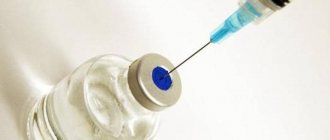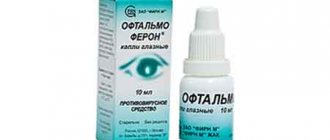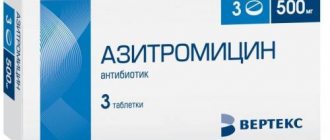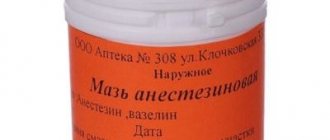From this article you will learn:
- How effective is novocaine?
- which is better - novocaine or lidocaine,
- Is it possible to dilute ceftriaxone with novocaine (or cefazolin).
Novocaine is a local anesthetic with moderate analgesic activity, in the past widely used for anesthesia in dentistry and general surgery. Novocaine (synonym - procaine) is “diethylaminoethyl ester of para-aminobenzoic acid”. Currently, novocaine is available in the form of a 0.5 or 2% solution, in ampoules. In terms of pain relief effectiveness, it is significantly weaker than other anesthetics, for example, lidocaine - about 2 times, weaker than ultracaine - at least 4-5 times.
This anesthetic was previously widely used in the USSR for local anesthesia - both during tooth extraction and opening of purulent abscesses, and for performing any operations under local anesthesia in general surgery. Novocaine is currently not used in dentistry - it has been replaced by articaine-based anesthetics, which include Ultracaine, Ubistezin, Septanest and others. In general surgery, novocaine is currently replaced by lidocaine - due to the greater safety and effectiveness of the latter (especially in purulent surgery).
Novocain: reviews of anesthesia
Novocaine - the instructions for use of this drug contain the following key characteristics, which do not allow the widespread use of this local anesthetic anymore, due to its shortcomings and the emergence of much more modern drugs for anesthesia.
Disadvantages of novocaine –
- weak analgesic effect,
- short duration of anesthesia,
- high allergy and toxicity to the body,
- Novocaine should not be used during pregnancy or breastfeeding,
- lack of analgesic effect in inflamed tissues (at the site of inflammation there is always an acidic pH, at which the effectiveness of novocaine sharply decreases, which does not allow achieving good pain relief in purulent surgery).
Novocaine: price and release forms Novocaine ampoules can contain either a 0.5% solution or a 2% solution. The cost of 1 package of novocaine (10 ampoules of 5 ml each) will be approximately 30-50 rubles.
Lidocaine replaced novocaine around the 90s. Lidocaine is 2 times stronger than novocaine in terms of depth of anesthesia and duration of effect, and at the same time it does not lose its effectiveness when injected into inflamed tissues (for example, with purulent abscesses). In addition, this anesthetic is distinguished by significantly lower allergenicity and toxicity of the drug. But as we said above, in dentistry lidocaine is used mainly only in provincial hospitals, because the depth and duration of anesthesia with this anesthetic is 2-3 times inferior to drugs based on articaine.
Contraindications for use
The drug has an impressive list of contraindications and restrictions for use. Thus, “Novocaine” and all its procaine-based forms are not used if the patient has hypersensitivity and allergies to the components included in the composition. As for whether Novocain can be given to a child, it is important to pay attention here: this anesthetic is prohibited for children under 12 years of age.
The drug should not be used by children under 12 years of age
Increased caution is required in cases of emergency surgical interventions with high rates of blood loss, as well as conditions of chronic, acute and progressive heart failure, liver and kidney diseases, pseudocholinesterase deficiency, age from 12 to 18 years, elderly age from 65 years, severe pathological conditions, pregnancy , childbirth, breastfeeding.
Modern analogues of novocaine in dentistry -
Despite the continued widespread use of lidocaine in medical practice, dentistry has long moved away from this anesthetic (24stoma.ru). As we said above, the most effective anesthetics in dentistry at the moment are drugs based on articaine, for example, ultracaine, ubistezin, septanest, alfacaine, etc. These drugs are no longer produced in ampoules (like novocaine or lidocaine), but in special capsules , containing 1.7 ml of anesthetic.
The anesthetic capsule is already ready for use; it does not need to be opened. It is completely inserted into a special carpule syringe, and a special double-sided needle is screwed into the side of the syringe nose (Fig. 1-3). When you press the syringe plunger, the latter presses on a movable rubber tab located in the back of the carpule, which causes an increase in pressure inside the carpule and the release of the anesthetic solution through the needle into the tissue.
How is anesthesia performed in dentistry?
Read more about modern anesthesia in dentistry in the article: → “Everything a patient needs to know about dental anesthesia”
Instructions for use of the solution “Novocaine 2%”
Depending on the disease, the dosage regimen and method of administration of the medicine differ. Depending on the doctor’s prescription, the medication is recommended to be used intramuscularly, orally, intravenously, and also intraosseously.
Twenty milliliters of the drug are used to provide novocaine anesthesia. The maximum content of the substance in this situation is 5 milliliters.
Novocaine 2% can be diluted to reduce the concentration of the active substance. The general course of treatment is twelve procedures. At the end of therapy, you can repeat the course.
If you need to get a less concentrated medicine (0.1-0.25%), the medicine contained in the ampoule is diluted with physiological sodium chloride solution (0.9%).
The rate of pharmacological action depends on the method of administration of the drug. For example, with intramuscular infusion, the positive effect occurs within an hour.
The use of novocaine for electrophoresis, compresses and dilution of antibiotics -
Electrophoresis with novocaine is not very effective. It is best to use the anesthetic Lidocaine 2% for electrophoresis (sold in ampoules of 2 ml).
Compress with dimexide and novocaine -
Compresses with dimexide are very often prescribed by maxillofacial surgeons, especially for traumatic injuries of the face (fractures of facial bones, without open wounds). Compresses have a very good effect and, for example, can reduce swelling and inflammation of soft tissues in case of a jaw fracture in just a few procedures.
Dimexide with novocaine compress: the proportions of the compress with dimexide and novocaine are used only externally. When applying a compress on the face, you need to use a 20-25% concentration of dimexide. To do this, dilute dimexide in the following proportion: 1 part dimexide - three parts warm boiled water. When used on less sensitive areas of the body, you can use more concentrated solutions (30, 35, 40%).
Moisten gauze pads with a solution diluted with water. Apply the contents of 1 ampoule of novocaine (5 ml of solution) directly onto moistened wipes. Apply the wipes to the desired area. Place a plastic film over the napkin, completely covering the area of the applied gauze napkin with the solution. Place a layer of fabric on top of the polyethylene (the thicker the fabric, the stronger the thermal effect will be - keep this in mind!) and bandage it.
The time of one compress is 20-30 minutes. The course of treatment is 10-12 procedures (1 procedure per day). From experience, we can say that to enhance the analgesic effect, it is better to use lidocaine rather than novocaine (2-4 ml of lidocaine per 1 compress). Lidocaine penetrates the skin better, is less allergic, and its analgesic effect is 2 times stronger.
Dimexide: how to apply a compress (photo 4-6)
How to dilute ceftriaxone with novocaine -
It is not advisable to dilute the antibiotic Ceftriaxone with novocaine, because the antibiotic itself is quite allergenic, and novocaine increases the risk of developing anaphylactic shock many times (compared to lidocaine). It is optimal to dilute ceftriaxone with a lidocaine solution (this is also recommended by WHO). This anesthetic is much less allergic and has a stronger analgesic effect.
Ceftriaxone 500 mg must be diluted in 2-2.5 ml of solvent. To dilute 1000 mg of ceftriaxone - 3.5-4 ml of solvent. The latter can be used either water for injection or a 0.5-1% solution of novocaine, but best of all is a 1% solution of lidocaine. But to dissolve ceftriaxone in lidocaine, you will still have to use water for injection, because. the concentration of lidocaine in ampoules is 2%.
For example, to obtain a 1% lidocaine solution for diluting 500 mg of ceftriaxone, you will need to draw 1.0 ml of lidocaine into a syringe, then 1.0 ml of water for injection into the same syringe. Then add the resulting solution to the ampoule with Ceftriaxone and shake.
Cefazolin: how to dilute with novocaine
Let us say right away that it is undesirable to dilute cefazolin with novocaine, as well as ceftriaxone (for the same reasons). It is also best to use a 1% lidocaine solution. To dissolve 1000 mg of cefazolin, 4 ml of a 1% lidocaine solution is needed. To obtain a 1% solution of lidocaine, you need to mix 2 ml of lidocaine and 2 ml of water for injection in a syringe, drawing both solutions in turn into one syringe. The resulting solution is injected into a cefazolin ampoule. We hope that our article on the topic: Novocain instructions for use was useful to you!
Sources:
1. Higher prof. the author's education in surgical dentistry, 2. Based on personal experience as a dental surgeon, 3. National Library of Medicine (USA), 4. “Local anesthesia in dentistry” (Baart J.), 5. “Propaedeutics of surgical dentistry” (Soloviev M.).
Pharmacological actions
The drug has a moderate analgesic effect, reduces the excitability of the motor areas of the brain and heart muscles, and eliminates spasms of smooth muscles.
When administered parenterally, a 2% solution of Novocaine lowers blood pressure, has an antiarrhythmic effect, and relieves shock. In large dosages, the use of the drug can impair muscle conduction and provoke cramps.
Intramuscular injections of Novocaine are effective for patients of retirement age with diseases associated with disorders of the nervous system.
Storage conditions, expiration date and prices in Moscow pharmacies
“Novocaine” in the form of a 0.5% injection solution will cost from 40 to 60 rubles per 200 ml bottle. To buy the drug at a pharmacy, you will have to present a prescription from a doctor. Ampoules should be stored in a dry, dark place out of reach of children and pets. According to the instructions, the shelf life is 3 years.
Before administering an anesthetic, the patient must warn the doctor about possible allergic reactions or chronic pathologies in his medical history. The specialist selects anesthesia, taking into account all the available nuances. Novocaine was one of the first painkillers to become widely popular in dental practice. However, today dentists have better, more effective and safe means in their arsenal for painlessly carrying out procedures of any complexity.
1Rabinovich S.A., Anisimova E.N., Zoryan E.V. Main directions of drug therapy for pain syndrome in dentistry, 2001.
How Novocain interacts with other medications
Other anesthetic drugs increase CNS depression. Anticoagulants contribute to blood clotting disorders, and the simultaneous use of disinfectant solutions with heavy metals significantly increases the likelihood of developing swelling and pain.
MAO inhibitors reduce blood pressure. When using Novocaine simultaneously with narcotic analgesics, an additive effect is observed. Vasoconstrictors, such as epinephrine (synthesized adrenaline), help prolong the anesthetic effect.
Interactions with other drugs should be considered before use.
Drug interactions of Novocaine
When using Novocaine simultaneously with:
- anticoagulants (dalteparin, warfarin, danaparoid, enoxaparin, ardeparin) - increases the risk of bleeding;
- guanadrel, guanethidine, trimethaphan, mecamylamine - possible development of bradycardia and decreased blood pressure;
- methoxamine, phenylephrine, epinephrine - the local anesthetic effect of Novocaine is enhanced;
- procarbazine, selegiline, furazolidone - blood pressure may drop.








